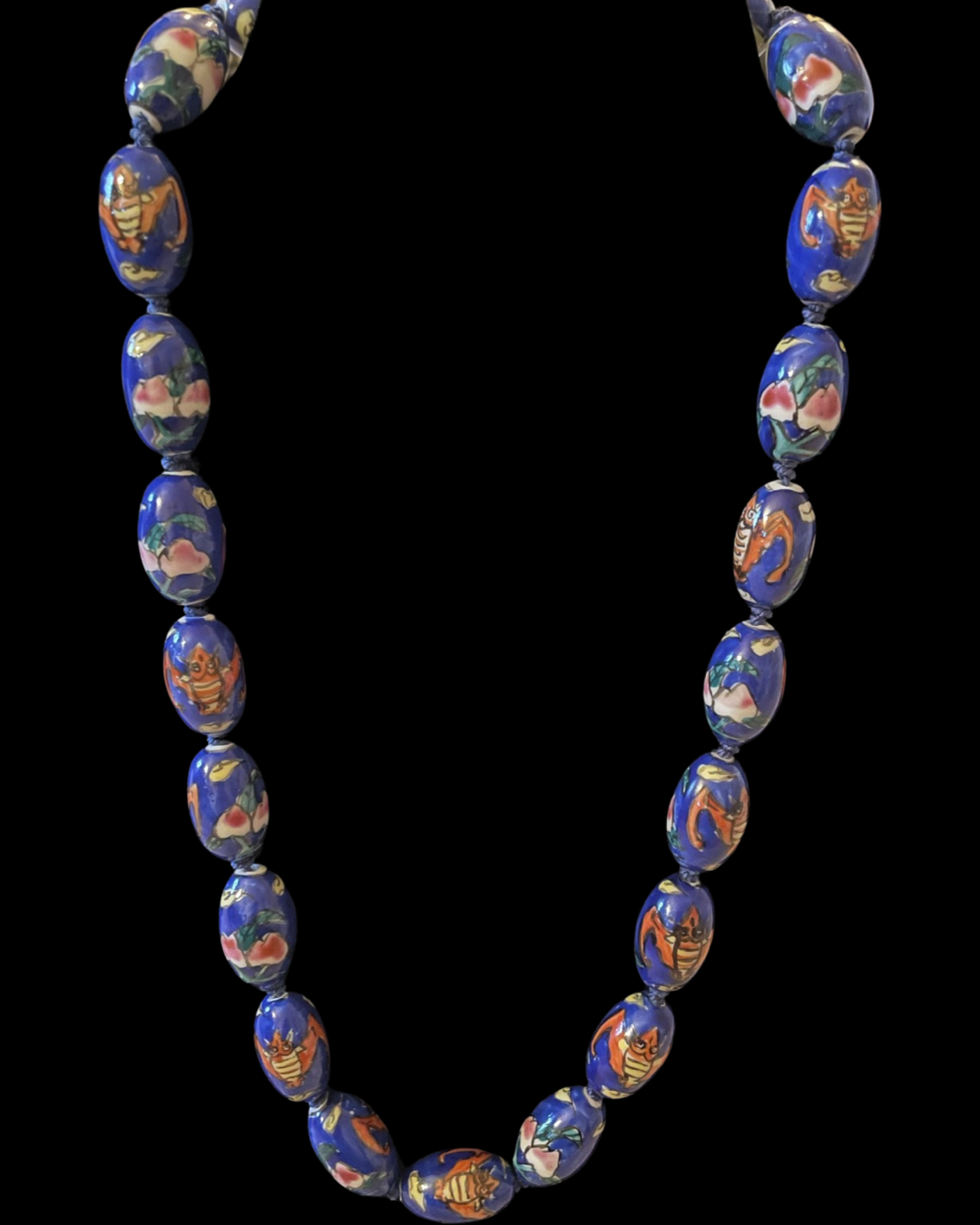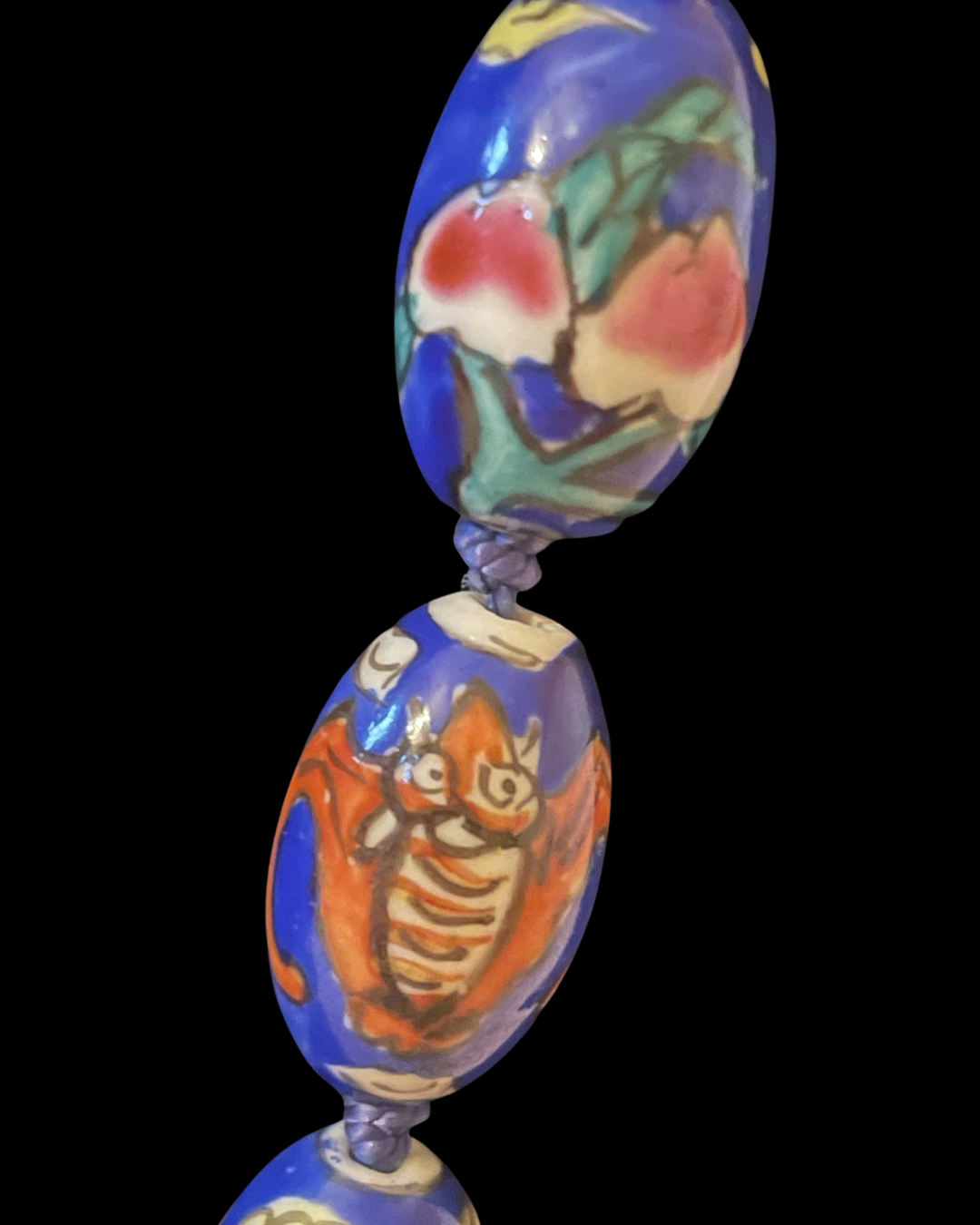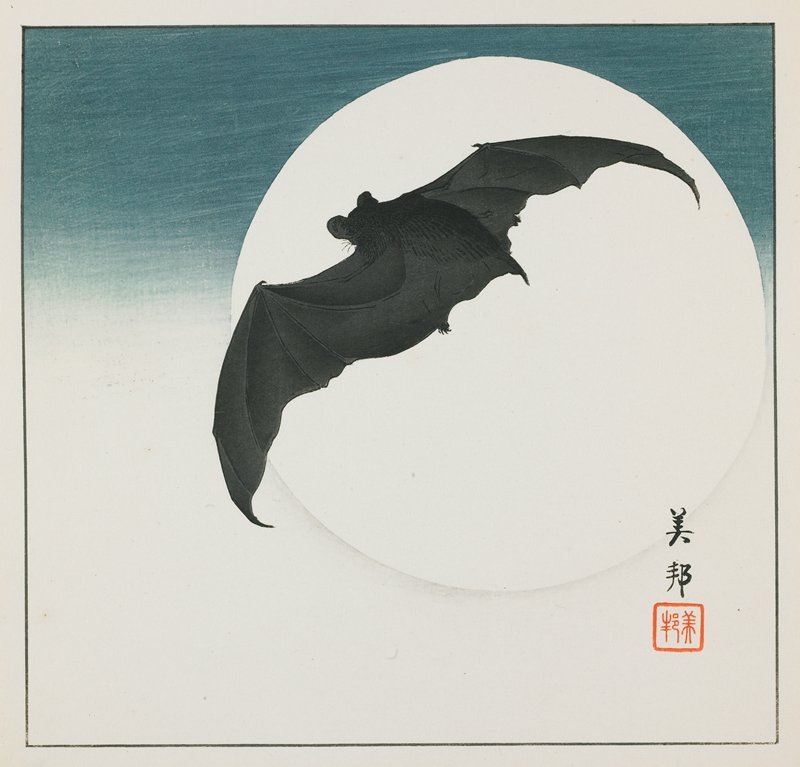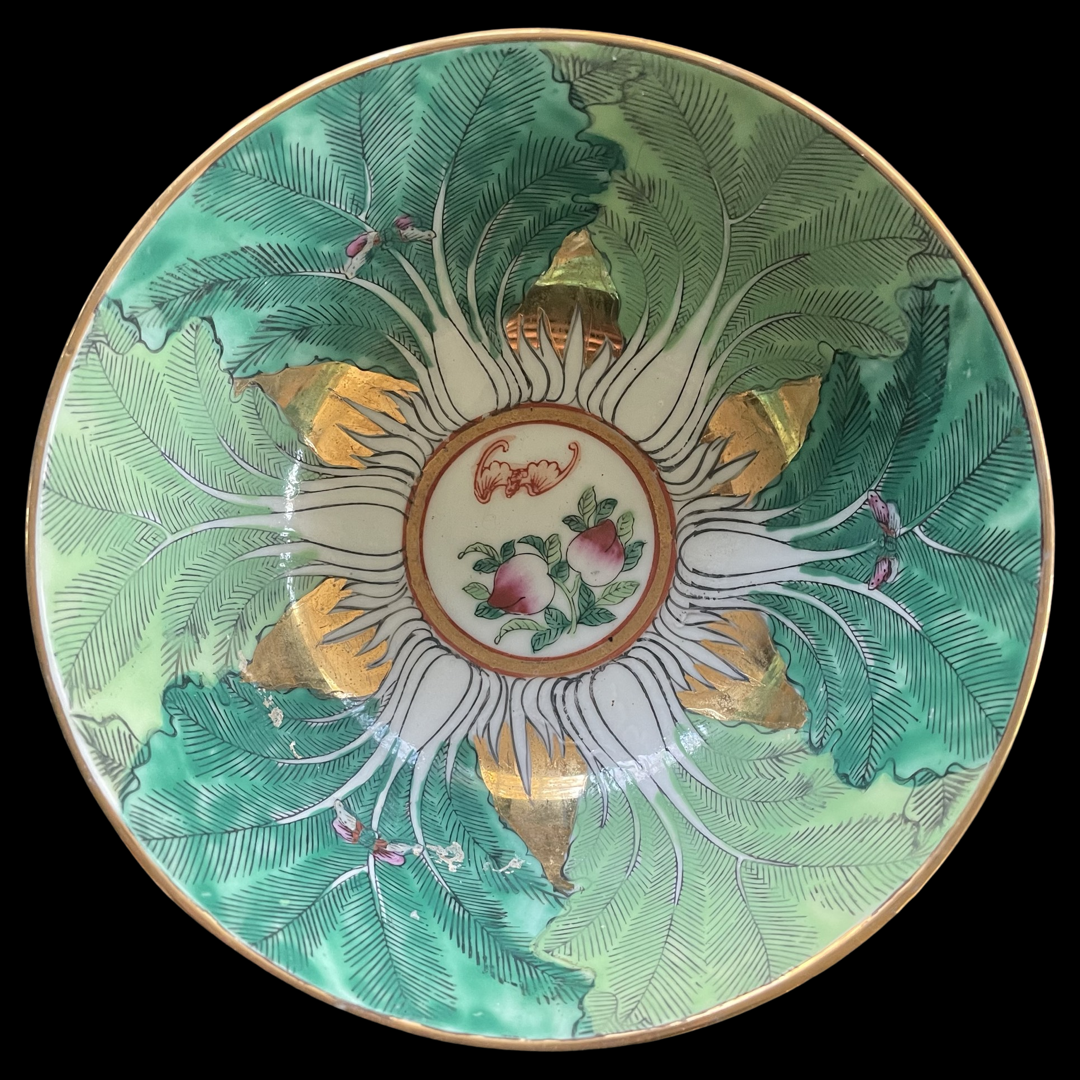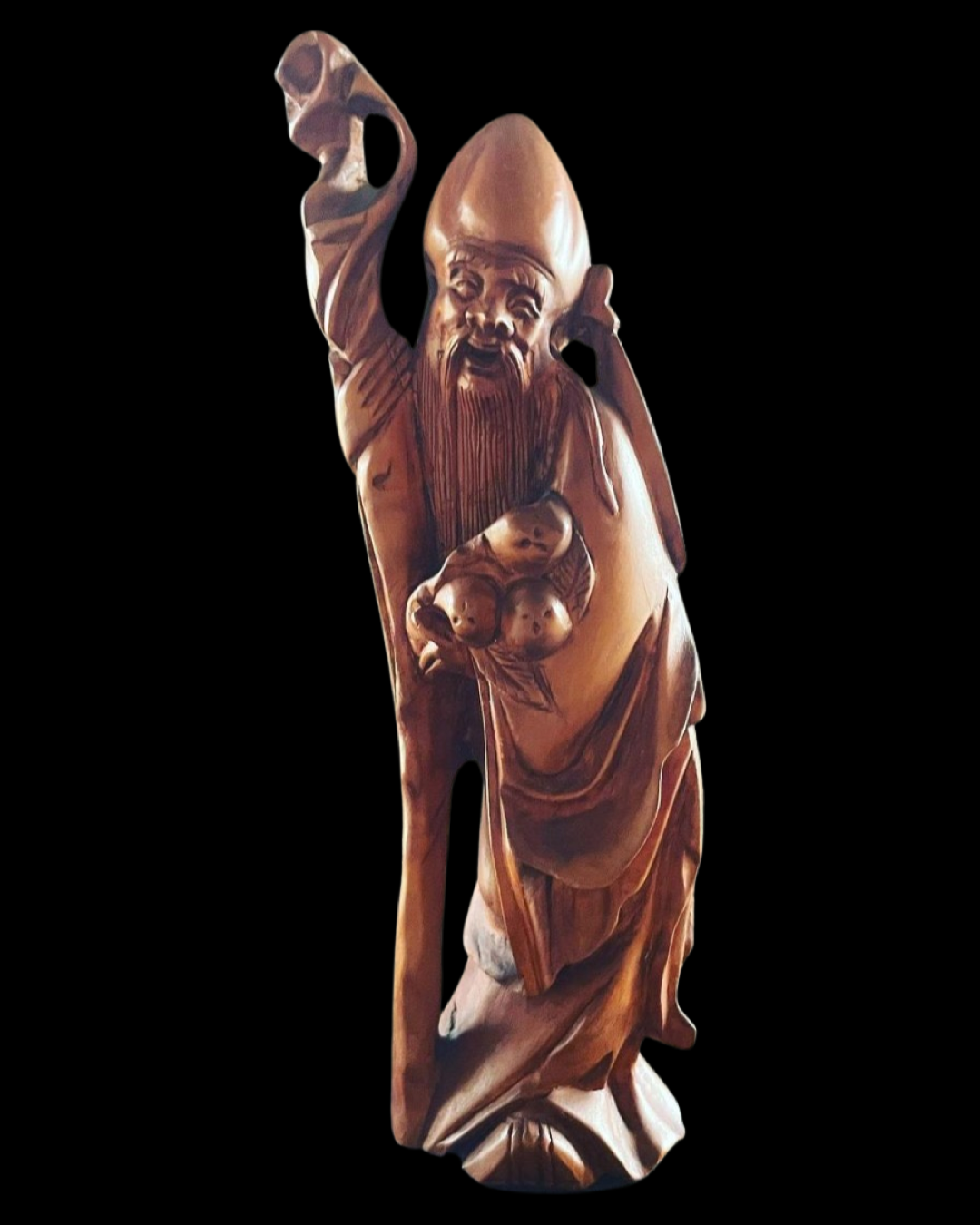Peaches & Bats
Symbols of Longevity and Good Fortune
Let’s be honest — nocturnal creatures like owls and bats aren’t always the most beloved.
Bats, in particular, are especially feared in most Western cultures because they are associated with vampires and disease, and for this reason, they made convenient scapegoats for the COVID-19 pandemic. But as always, my dear ones, there is more to unpack on the subject of bats.
In Chinese culture, bats are considered lucky because the Chinese word for bat (蝠) sounds similar to the word for good fortune (福). Bats are also associated with blessings and happiness because they are believed to bring good news and good luck to anyone who sees them.
In traditional Chinese art, bats are often depicted in pairs, which represents double blessings and happiness. But the most auspicious grouping is the five-bat design because the number five is associated with good fortune in Chinese culture. Bats in this configuration symbolize five blessings: longevity, health, wealth, virtue, and natural death.
Bats are also revered in Chinese culture for their long life span (some species can live up to 30 years in the wild), and their role in pollinating flowers and fruits is regarded as a symbol of fertility and prosperity.
Let’s now talk about peaches…
Peaches are also considered auspicious symbols in Chinese culture. The Chinese word for peach (桃) sounds similar to the word for "to assure," "to guarantee," or "to promise," which is why peaches are often associated with good luck and good fortune. Peaches are also a symbol of longevity and immortality in Chinese culture because they are believed to have the ability to extend one's life.
The peaches of immortality (also known as the peaches of eternal life or the peaches of the sun) are a mythical fruit that can grant eternal life to those who eat them. According to Chinese mythology, the peaches of immortality grow in the Garden of the Immortals and are guarded by a giant spirit called the Jade Emperor. The peaches were said to ripen only once every three thousand years, and those who were fortunate enough to eat them would become immortal. Shou-Lao, the god of longevity, is often depicted emerging from or holding a peach.
In terms of symbolism, peaches are also associated with love, marriage, and fertility in Chinese culture. (The current sexualized use of the peach emoji to signify buttocks or female genitalia shows us that this association has migrated to Western culture as well.) Peaches are also associated with fertility and the birth of children, as they are seen as a symbol of abundance and prosperity, and they are believed to bring happiness and harmony to relationships.
So while it may seem like an odd pairing, objects decorated with bats and peaches are meant to convey wishes for good fortune and a long life. The gallery below features works with bats and peaches as decorative motifs.
Dish with peaches and bats, early 18th century, China. From the collection of the Metropolitan Museum of Art. Three bats are visible on the face of the plate, and two are hidden under the rim. There are eight peaches in total, representing the Eight Immortals.
Beaded necklace featuring bat and peaches motif, House of Good Fortune Collection.
Detail of individual beads depicting derpy little bats and peaches, House of Good Fortune Collection.
Bat pendant, gold, 200-1550 A.D. from the collection of the Museum of Fine Arts Houston.
The ancient South and Central American indigenous people had a variety of beliefs and cultural practices related to bats, as these animals are found throughout the region and are important pollinators in this part of the world. Shamans in many of these communities were believed to have the ability to transform into animals, including bats, as a way of accessing the spirit world and gaining special powers or abilities.
Bat and Moon, c. 1928-1930, Takahashi Bihō, Woodblock print; ink and color on paper. From the collection of the Minneapolis Institute of Art. Because the full moon is also viewed as an auspicious occurrence, the combination of a bat and the moon suggests exponential happiness.
Golden Bat Brand Fireworks Label, from the House of Good Fortune Collection.
Porcleain dish, 1723-1735, Jingdezhen, from the collection of the Victoria & Albert Museum. The decoration on this dish consists of a peach tree growing from the side of a cliff and bats flying out to sea. The Chinese character for longevity is also painted onto the fruits shown on the exterior of the dish. The whole scene illustrates the traditional Chinese birthday greeting “May your happiness be as the Eastern Sea and may you live to be as old as the Southern Mountain.”
Green bowl with peaches and bat motif, Y.T. Japanese Porcelainwares, hand decorated in Hong Kong, House of Good Fortune Collection.
Shou-lao figurine, holding a peach. House of Good Fortune Collection.
Porcelain dish, 1662-1722, Jingdezhen, from the collection of the Victoria & Albert Museum. “It is decorated with finger citron also known as Buddha's hand and fruiting peach branches. The peach is symbolic of longevity….[and] [T]he finger citron with its many 'fingers' represent abundant blessings. These good wishes would have been appropriate for a birthday gift.”
Carved statue of Shou-Lao, God of Longevity, holding peaches of immortality, House of Good Fortune Collection.
Frowning Bat, House of Good Fortune Collection.
Bacardi & Momofuku: The Use of Bats and Peaches in Company Logos
Bacardi, the Bermuda-based rum producer, is one — if not the only — Western company that uses a bat in its logo. The Bacardi family founded the company in Cuba and began producing rum in the late 1800s. Fruit bats are native to Cuba and began to hang out in the rafters of the distillery, perhaps drawn to the sweet smell of the rum? According to the company's website, the founder’s wife recognized that bats were an omen of good fortune, and the bat was subsequently chosen to be the central feature of the brand’s logo.
The name of David Chang’s food empire, Momofuku, means “lucky peach” in Japanese. (Regular readers will recall this same auspicious association with the Japanese word for “owl” — fukurō). But “Momofuku” also happens to the first name of the man who created instant ramen and, according to Chang, has the added benefit of sounding like an English swearword.
The Bacardi logo features a bat prominently.
Momofuku, the name of David Chang’s food empire means “lucky peach” in Japanese.
Further Reading:
Read about two other auspicious Chinese pairings — the dragon and the phoenix; and the dragon and the tiger.




